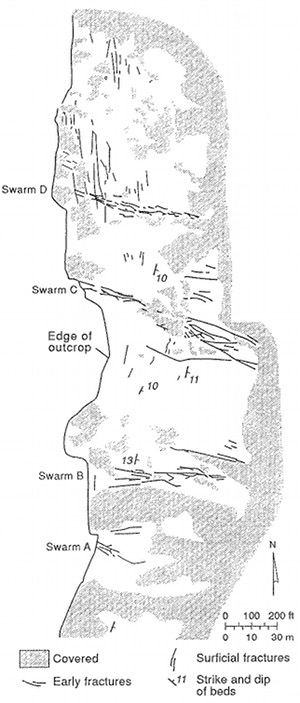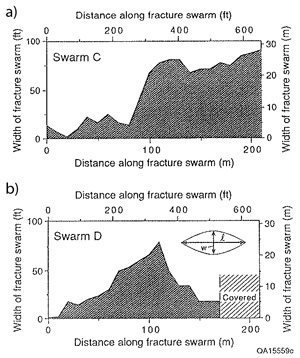| |||||||
|
|
|||||||
|
|
|||||||
| Width of Joint Zones | |||||||
|
Width of joint zones are not well known. The few sets of published data available show that joint width varies widely. For example, joint zones C and D in Figure 1 mapped by Laubach (1991) have width distributions plotted in Figure 2 which have maximum values of about 22-27 meters. According to Laubach, the widths in the area range from 7 to more than 50 meters. There is a certain degree of ambiguity in the dimensions of joint zones due to the difficulty of separating joint zones from fault zones. This issue will be revisited in 'Growth of Faults based on Sequential Shearing of Initial Discontinuities.'
| |||||||
| Reference: |
|||||||
| Laubach, S.E., 1991 Laubach, S.E., 1992 |
|||||||
|
Readme | About Us | Acknowledgement | How to Cite | Terms of Use | Ⓒ Rock Fracture Knowledgebase |
|||||||

